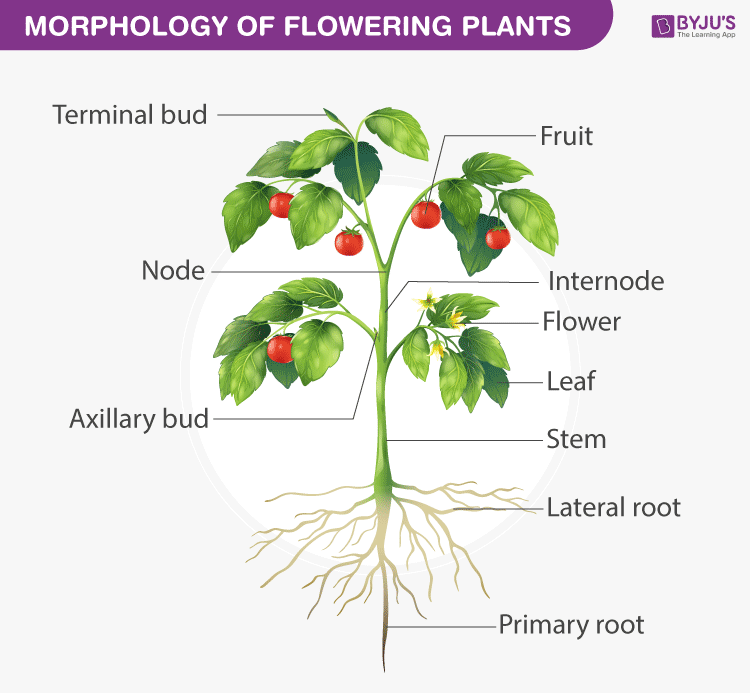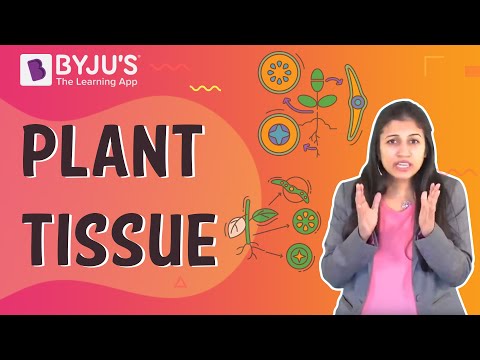CBSE Class 11 Biology Chapter 5 notes – Morphology of Flowering Plants
Morphology is the branch of Science, which mainly deals with the external structure and features of the living system. It is basically about the study of forms, morphological characteristics and relative positions of different parts of plants.
The term, morphology of flowering plants mainly refers to the study of external features of flowering plants. The two main external parts of a plant include –Root system and the Shoot system.
The chapter, Morphology of Flowering plants, explains the complete features of flowering plants, its structure, functions, classifications, significances and other morphological features of roots, stem, leaves, flower, fruits and the seeds.
Read more: Anatomy Of Angiosperms
Flowering Plants

Flowering plants also referred angiosperms are a huge group of vascular plants in the plant kingdom. These plants show a great variety of form, shape and size. The size ranges from the Lemna and minute Wolffia (0.1cm) to the large-sized Banyan and tall Eucalyptus (up to 100 metres). The morphology of flowering plants includes root systems and shoot system.
Also Refer: Flower – Parts and its Functions
Let us learn more in detail about the morphology of flowering plants.
The Root system
The root system is the underground part of the plant developed from the seed embryo. It is mainly involved in anchoring plants below the soil, provides support, stores food and nutrients, absorbs water and other essential nutrients required for the growth and development. There are three different types of roots and are classified based on their place of origin and the arrangements.
Also Read: Root system
The Shoot System
The shoot system is the aerial part of the plant, which is found above the root and ground level. The shoot system includes the stem, leaves, bud, flower, fruits and the seeds. Shoot system is one of the important systems of a plant.
For More Information On Plant Tissue, Watch The Below Video:

Morphology of Flowering Plants Class 11 Notes – Questions
- What is venation?
- What is aestivation?
- Define inflorescence.
- What is a perigynous flower?
- Explain the regions of the root.
- What is meant by placentation?
- Briefly explain the parts of a flower.
- What is phyllotaxy? State the types.
- What is a fibrous root system? Explain
- Describe the structure of a flower in brief.
- What are adventitious roots? Give examples.
- What are pneumatophores? State their function.
- Differentiate between Androecium and Gynoecium.
- Explain how modifications of the leaf help the plants to adapt.
- How is a tap root system different from a primary root system?
Stay tuned with BYJU’S to explore more information and important questions from Morphology of Flowering Plants Class 11 Notes and other related topics.
| Also Access |
| NCERT Solutions for Class 11 Biology Chapter 5 |
| NCERT Exemplar for Class 11 Biology Chapter 5 |
Frequently asked Questions on CBSE Class 11 Biology Notes Chapter 5: Morphology of Flowering Plants
What is a ‘Terminal bud’?
A terminal bud occurs on the end of a stem and lateral buds are found on the side. It is also known as the apical bud.
What are the main types of a plant tissue?
Three major types of plant tissues are dermal, ground and vascular tissues.
What are the parts of the ‘Root system’?
Parts of a root include the primary root, lateral roots, the apical meristem, a root cap and root hairs.


Comments